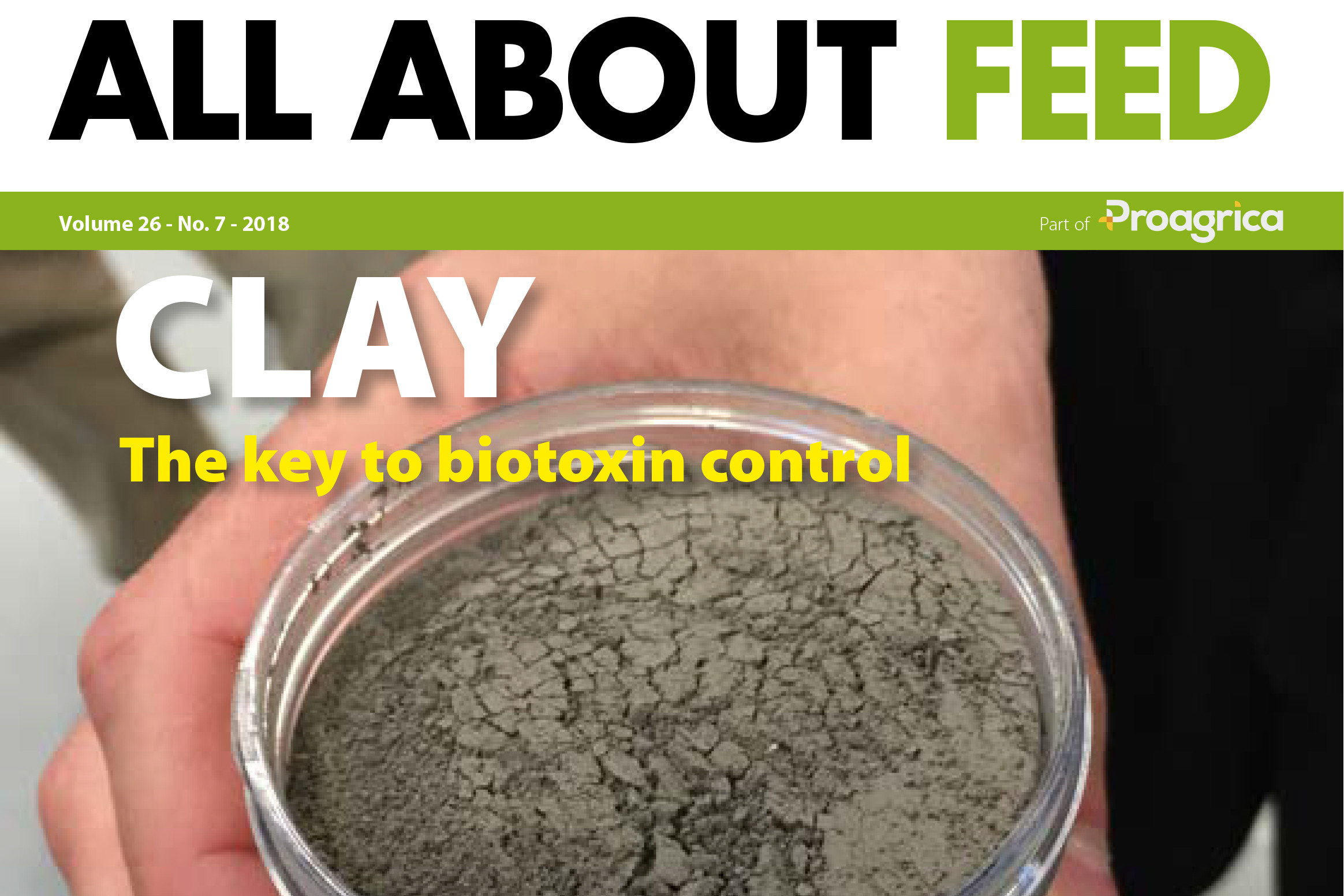Issue 7 of All About Feed now available online

The latest edition (issue 7) of All About Feed magazine is now available to read online. In this issue we take a look at clay minerals in the fight to go antibiotic free, improving understanding of amino acid responses to phytase, feed flavours for calves and much more.
Poultry production under the philosophy ‘no antibiotics ever’ (NAE), is spreading like wild fire in the US and also in some other parts of the world. Although this sounds like a good development, and it is, it also comes with challenges, both from a nutritional standpoint as well as keeping the margins and being able to sell the products. At a recent first-annual summer international poultry symposium, organised by Amlan International, the challenges and solutions for poultry producers to produce under antibiotic free systems were discussed in further detail. Amlan produces specialty ingredients, based on clay, and in this article, on page 24, we take a look at the topics discussed at this event and how clay can help.
Phytase and amino acid interactions
Whilst the benefit of adding phytase to pig and poultry diets is largely undisputed, the nutrient uplift values manufacturers attribute to their products can vary markedly. This is particularly the case for amino acid release values. To improve understanding in this complicated area, two meta-analyses were recently carried out by DSM, analysing peer-reviewed amino acid digestibility trials with phytase in pigs and poultry. The aim of the research project was to provide accurate information on amino acid response to phytase and to reduce some of the confusion caused by the varying recommendations for different products on the market. We delve more into the conclusions in the article on page 14 of this issue.

Feed flavours for calves
Animals rely on their sense of smell and taste to evaluate desirable feed. When feedstuffs have an unpleasant smell and taste, they can result in reduced feed intake and a poor return on investment for producers. The use of feed flavours has thus been prompted as a means of improving the smell and taste of animal feeds and hence improves feed intake and animal performance. Also, the feed that is made more palatable through the addition of flavours is easier digested than a less palatable feed, and will thus have greater feed efficiency. Read more on page 8 of this issue.

Also in this issue:
• Food byproducts for animal feed
• Nutrition is key for transition cows
• Hazard analysis and dust control
• Early nutrition benefits calves
To read all the articles in this issue, go to the magazine overview page and sign up with your current website login.











